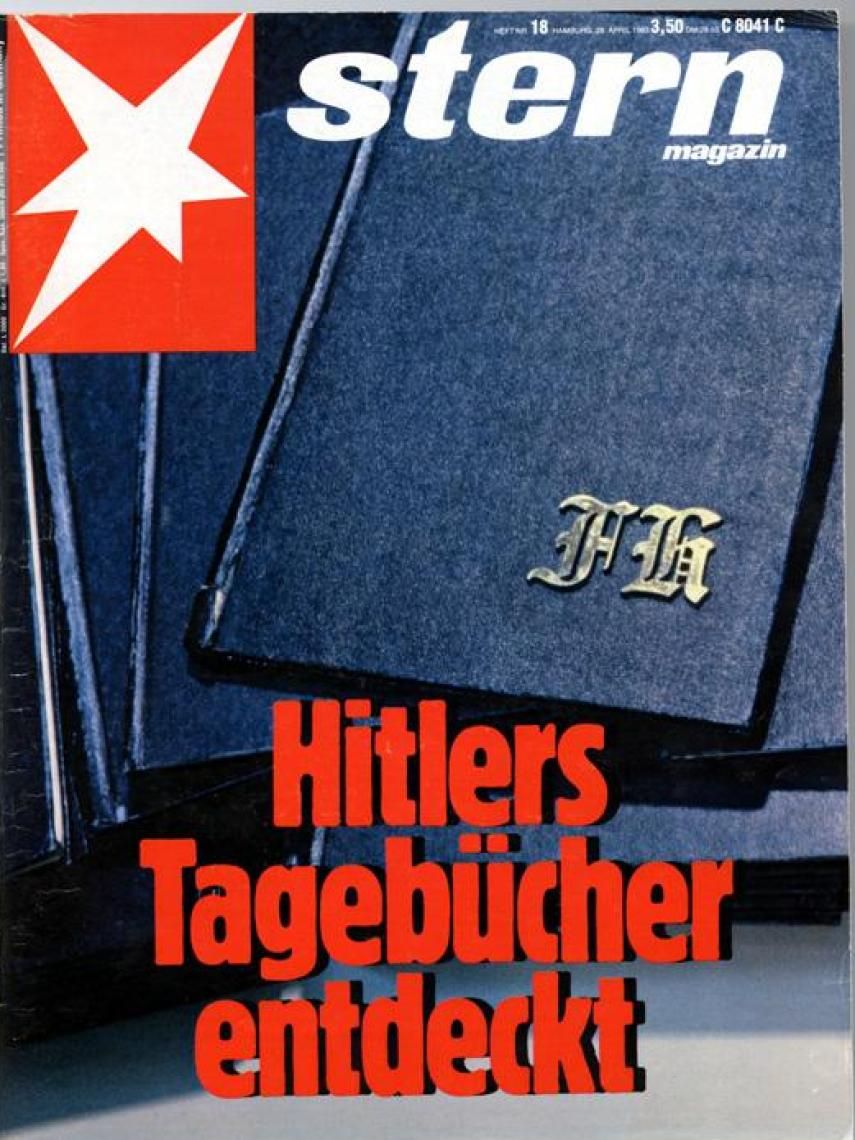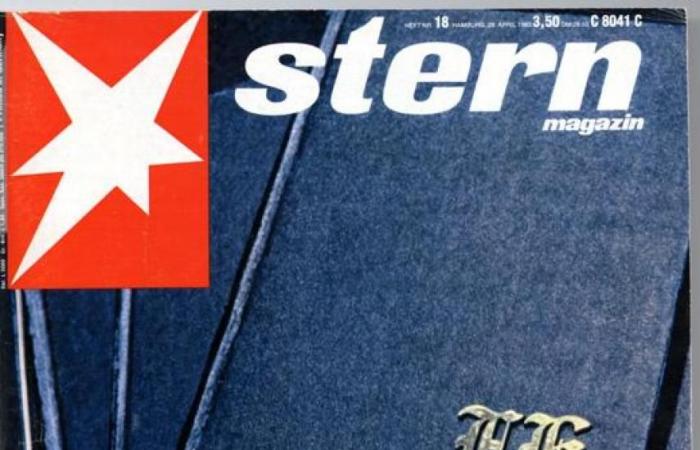In 1795, William Henry Irelanda young British antiquarian, said he had discovered a literary treasure: personal documents of William Shakespeareincluding love letters, unpublished manuscripts and a religious confession. The news was welcomed with enthusiasm for the cultural of London. However, it was a hoax. A scholar ended up demonstrating that the documents were Modern falsificationsexposing errors in language, spelling and calligraphy that did not coincide with the time of Shakespeare.
Almost two centuries later, in 1983, the German weekly Stern announced having found the personal diaries of Adolf Hitler. They were sixty manuscript volumes that promised to reveal to führer innermost, to the man behind the monster.
The finding promised to change everything that was known about the dictator and Stern He published them for days, validated by The Sunday Times and defended by lord Dacreone of the most prestigious historians of the century. What nobody suspected was that those newspapers were not only false, but one of the greatest Cultural scams of the twentieth century. All were deceived.
The finding that was not
It all started with the journalist Gerd Heidemannstar figure of the German newspaper Stern and passionate collector of Nazi objects. Through its wide network of contacts, Heidemann ran into an alleged collector, who used the alias of ‘Dr. Fischer ‘, who claimed to possess the Personal newspapers by Adolf Hitler, recovered from a plane crash that occurred in April 1945 near Börnersdorf, in the current Saxony.
Heidemann, convinced that he had before him the exclusive of the century, convinced Stern to acquire the manuscripts, 60 volumes that cost near 9.3 million frames (more than 4 million euros) to the German weekly. Finally, on April 25, 1983, Stern announced it to the world: Hitler had written his memoirs. They were published exclusively. And they would change the story.

Stern cover. Wikimedia Commons
Academics support them
One of the first to validate the documents was Hugh Trevor-Roperalso known as Lord Dacre, Professor of Modern History in Oxford and author of The last Days of Hitler. After a preliminary examination, without performing forensic or dating analysis, he concluded that the documents “showed no inconsistencies” and that “the story fit perfectly.”
Other international media, such as The Sunday Times, Newsweek, The Times y The mirror They rushed to acquire the publication rights and even the BBC scheduled specials on the finding. But the enthusiasm was ahead of the evidence.
El counterfeit of stuttgart
Because the alleged ‘Dr. Fischer ‘turned out to be Konrad Kujauan acquaintance forger Professional with a history of selling medals, letters and false memories of the Tercer rich. Kujau, who had a military memories store in Stuttgart, specialized in reproducing calligraphies, stamps and Nazi documents, but his peak work were the Adolf Hitler newspapers.
For this, he used bound notebooks with Spastic and artificially aged with tea, and wrote with modern ink supposedly intimate phrases of Hitler, many of them taken from My fight or directly invented. In some pages, Hitler appeared as a victim of his generals and in others he claimed not to know anything about the concentration camps.

Konrad Kujau. Wikimedia Commons
He even signed each volume with the initials ‘FH’ on the cover thinking that they corresponded to ‘Führer Hitler’, a detail absurd that No one detected For weeks.
The fall
Inevitably, the first forensic analyzes commissioned by the German government revealed the obvious: the paper and the ink were modern. Dating tests They invalidated The spelling documents and fouls and style errors confirmed it, so the farce crumbled.
On May 6, 1983, Stern He publicly admitted that he had been the victim of a scam and the scandal was devastating. Gerd Heidemann was dismissed and processed by Malversaciónsince he had diverted a good part of the money received to personal accounts and Kujau was sentenced to Four and a half years in prison.
-And although he rectified days after the announcement, Trevor-Roper, Lord Dacre, also suffered a hard blow to his prestige academic

They believed because they wanted to believe
The key to deception was not the quality of the newspapers, but the desire to be real, the need to have exclusive, the thirst for historical revelation. That’s why nobody wanted to look too much and No one put on the emotion.
Der Spiegel dedicated months to investigating why the entire verification system had failed and the result was as painful as revealing: journalism failed by excess of desire. And the academic world did the same by authority blindness.
What happened next?
Hitler’s false newspapers are preserved today in the archives of the Federal archive in Berlin as a judicial evidence and as a reminder of one of the most popular fraud of journalism of the twentieth century. Kujau, after serving a little more than three years of conviction, left prison and reinvented himself as Professional Art Counter selling legal parodies of Picasso, Miró o Dalísigned with their name. Ironically, his works began to have value for being false and died in 2000 due to a throat cancer.
Heidemann, on the other hand, was sentenced to four and a half years in prison and never recovered his prestige. After leaving prison he lived from public life, harassed by debts And discredited as a journalist and, in some later interviews, he said he had never stopped believing that the Diaries were real. He died in 2024.

Gerd Heidemann. Wikimedia Commons
Trevor-Roper managed to partially rebuild his reputation thanks to his previous academic work, although the case pursued him during the rest of his life, since his rectification came too late to Avoid damage.
The newspaper Sternalthough he managed to survive the scandal, he had to do a self -criticism public rarely seen in modern journalism and, for years, their journalists lived with the open wound, aware that they had been victims And also accomplices.
THE MYTH OF human HITLER
One of the reasons why false newspapers were so credible, although today it could be incomprehensible, they presented a version of Hitler Less monstrousfurther Dubitativemore “human.” Those newspapers showed a Hitler who cared about his dogthat I was not aware of the Holocaust and that he doubted his General. He was not innocent, but neither did he absolute demon.
And that version fit an unconscious desire on the part of the public and certain editorial sectors to understand and explain evil not as pure evilbut how error as tragedy personal. And as the newspapers offered that story, so so many wanted to believe them.

In addition, until that moment, the world believed that Mein Kampf was the only document written by Hitler, so the newspapers were so attractive.
A lie too perfect
The Kujau case was not just a editorial fraudit was a warning, a call for attention to journalism, to publishers and readers. Because reputation does not replace the analysis, and a story, however powerful, it is not synonymous with being true.
And above all, because when a story is too good to be true, it is time for Raise the eyebrowNot to raise the cup.
In one of the last interviews he granted, the falsifier Konrad Kujau said among laughs that the newspapers “were not so bad” and that, if they had not dealt with Hitler, “They would have been a fairly entertaining novel”.












